Submissions of 303rd Bomb Group related stories and articles are most welcome.



February 24, 2013
Volume V, Issue 2
www.303rdBG.com
The Story of Robert J. Sorenson
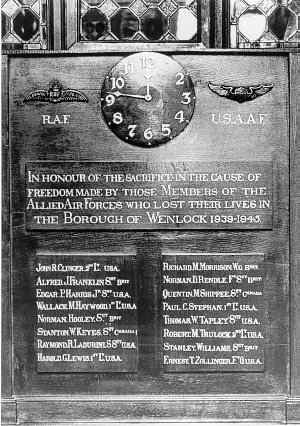
|
The whistle blew at 3:30 AM. "Breakfast at 4, briefing at 4:30." It was a typical English morning. The fog was so thick, our clothes were damp by the time we reached the mess hall. We talked as we ate: "I'll bet we hit Berlin today, better eat all we can." "I hope it's a milk run." "With this fog, we'll be back in the sack by 6 AM."
In the briefing room we were told this was to be a quickie; a short run to the Ruhr Valley. That was good news. If we did get off, we'd be back by noon. It was the eleventh mission for our crew; another reason for optimism. It seemed that if a crew got past 10 missions, they were riding a lucky star and had a good chance of finishing their tour.
We picked up our flying equipment and piled into the truck which hauled us to the hardstand where the ground crew was getting our plane, Duffy's Tavern, ready to go. By 5 AM we were loaded with four tons of bombs, the crew had checked all of their equipment and we were just waiting for the signal to start engines and taxi into take-off position. The fog hung on, so we sat and sweated it out. Waiting like that, it seemed that time almost stopped. Finally, at 5:30, we got the green flare. The fog had lifted enough for us to take off. The mission was "Go."
As our turn came and the pilot gunned Duffy's Tavern down the runway, the visibility didn't seem to be that great. As we left the ground and, almost before the wheels were retracted, we were into the "soup." Shortly, Lt. Stephan told us we would be on instruments until we cleared 18,000 ft. That made everyone a bit jittery. We chatted over the intercom to ease the tension.
About 45 minutes later, the pilot announced we were at 14,000 ft. and told me to arm the bombs. I usually did that when we were over the Channel, but today, we would be on oxygen before we cleared the overcast so I pulled the "safety pins" early.
"Pilot to Waist: Are all pins pulled?" "Waist to Pilot: Yes, Sir." "Pilot to crew: We are at 14,700 feet. Put on oxygen masks." Those were the last words I heard over the intercom. About 10 minutes later, we must have been at about 17,000 ft., I noticed a bright red glow out the left waist window. Thinking we were breaking through the clouds and the glow was the sun, I stood up to look out. That was no sun! There was a ten-foot tail of flame coming from the No. 1 engine!
I started to holler over the intercom: "No. 1 engine on fire!" but I don't think the pilot ever heard me because, almost at the same instant, the plane flipped over, went into a spin and then exploded.
Sgt. Keyes had been sitting in the waist area near me. His parachute pack lay beside him. Mine was by the rear exit door. I started for it as I gave the alarm over the intercom, but I never reached it.
As the plane flipped, I was thrown against the floor with such force that I couldn't move a muscle. It probably was only a split second, but it seemed like a long time. Then came the terrible explosion which blew me out through the fuselage head first. I remember my hips getting caught between some of the heavier steel ribs of the plane and I had to twist my body before going through.
Once in the air, everything seemed to be floating and there was a terrific ball of fire. All at once, out of the debris, came a parachute pack. It fell right into my arms. I was conscious at the time and snapped the chest pack onto my harness.
I had no fear of dying, I wasn't scared and knew I must keep my head. I may have blacked out for a few seconds for the next thing I knew, I was floating free. There was no debris around me and the fireball was gone.
I remembered our instruction to count to ten before pulling the ripcord. I counted fast and pulled the ring. Nothing happened. I looked at my hand. I was holding the ring, but there was no cord attached to it. I shook my hand and thought I threw the ring away, then started clawing at the pack. There was no sensation of falling, but I knew I had to get that chute open.
I passed out. My complete life went through my mind; every good thing and every bad thing, I even saw my grandparents. It was almost like meeting them in a new world. They had been dead for 15 years, but they seemed as real as they were when I was a kid on their farm.
When I regained consciousness, I started tearing at the pack again. Finally it opened partially, but I was tangled in the cords. As I struggled, I noticed that part of the chute was burned and hung above me like a tattered rag.
I prayed all the way down. I must have passed out three or four times. It seemed like I'd never get to the ground. The last thing I remembered was seeing a large tree coming at me very fast.
The Fortress crashed in flames on the road between the villages of Much Wenlock and Bourton, but wreckage was strewn over a four- mile area. Part of the cockpit and a wing section landed in front of the Much Wenlock post office. Miraculously, no one on the ground was injured.
The nearest residence was that of Mr. Tom Craig of Westwood Farm. He recalls that fateful morning: "It was so wet and foggy, I decided to stay in and put up the wages (make out the payroll), before going to have a look at the cattle, else I might have been in the direct path of the failing bomber. Hearing the roaring of engines and several explosions, I rushed from the house in the direction of the crash. There was wreckage everywhere. What was left of the fuselage was an inferno with ammo and bombs exploding. It was useless to get close to the site so I ran back to the house and rang up the police and fire brigade."
Sorenson didn't learn many of the details of that morning until 15 years later when he was able to establish contact with the two men who found him and probably were responsible for saving his life. They were neighbors and members of the Wenlock Home Guard.
One of those men, Mr. Edward Townsend, told this story: "Harry Murdoch and I rushed to the crash site to try to lend a hand. When we got out of town, Burt Luscott, another of the Home Guard, was stopping traffic from Much Wenlock since the road ahead was blocked by flaming wreckage. Murdoch and I set off across the marshy fields to search for any survivors. It was misty and we couldn't see too far, but in the second field from the road, we thought we heard a faint 'Help.' We set off in the direction indicated and shortly came upon an airman leaning over some wooden rails in the hedgerow. He looked in a very bad state and was only half conscious. He apparently had walked or crawled 60 or 70 yards from a large oak tree where we later found the burnt and torn remains of a parachute. He was still holding the metal grip of the parachute ripcord. Two more local men came up and together, we placed the injured airman on an iron hurdle (gate) from the hedge and carried him to the road. Shortly an ambulance arrived and took him off to the hospital. I often wondered about him and didn't know he had survived until he contacted me in 1959."
Sorenson picks up the story: The next thing I was aware of was two days later when I woke up in the hospital. They told me I had a concussion, was missing a few teeth, my spine was crushed, my neck broken in two places and I had a blood clot in my left eye.
I was pleased to find that Sgt. Phillips, our engineer was in the next bed. They had found him eleven miles from where I landed. His back was broken in several places. He told me that we were the only survivors.
No one will ever know just what happened or why. Much Wenlock was about 200 miles off the course we should have taken that morning. Many theories have been advanced but no definite conclusions were ever reached.
On November 11, 1948, the town of Much Wenlock unveiled a memorial clock mounted on an old oak panel and affixed to the wall of the town Guildhall. It bears the wings of the USAAF and the RAF along with this inscription: "In honour of the sacrifices in the cause of freedom made by those members of the Allied Air Forces who lost their lives in the Borough of Wenlock, 1939-1945." Below that are the names of seven of Sorenson's crew mates, three other American and six British airmen who lost their lives in that area.
In concluding the story of his experiences, Sorenson shakes his head in bewilderment. "On this ill-fated mission, two out of nine survived. Why? The Lord, alone, knows the answer."
The other survivor, Dwight A. Phillips, Jr. passed away in October 1990.
Robert J. Sorenson returned to his native Michigan after the war. He finally joined the rest of his crew on September 29, 2001.
![]()
A LUCKY DAY AT OUR HOUSE
by Marilyn Fye, Daughter of Joseph Edward Flammia
My father, Joseph Edward Flammia, was interned in Switzerland on 13 July 1944 after a crash landing on his 30th and final mission flying as a ball-turret gunner on a B-17. Joe was a member of the 8th Air Force, 303rd Bomb Group, 360th Bomb Squadron during WWII. He was on the Lt. Paul H. Long Crew.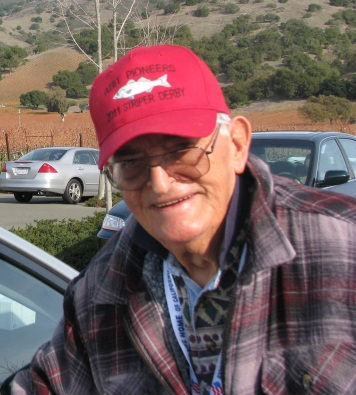
Happy 90th Birthday, Joe ! Joseph Edward Flammia was the ball-turret gunner on the 360th BS Lt. Paul H. Long Crew. Joe will be 90 on February 27, 2013. He lives in Yountville, CA at the Veterans Home. The Veterans home is an amazing place. It is over 550 acres and houses 1000 men and about 40 women veterans. He is very alert and enjoys the many activities that are held there.
As my dad recalls, it was Friday the 13, 1944 and they were looking forward to flying their last mission. After they dropped their bombs and were headed home, they were hit by anti-aircraft artillery. He remembers the Swiss Alps getting dangerously close to the bottom of the plane as they lost altitude in a dramatic approach for a crash landing. The wheels were hung up and my dad had to go back to the bomb bay and manually crank them down.
 |
In order to keep the men busy, they were required to take classes. Dad took skiing and language classes, earning a certificate in French. It is amazing to think of the men who were recently fighting one another now sitting in classes together learning one another's native tongue.
I think, in general, the soldiers from various countries got along, but my sister remembers dad telling her that one night, after drinking too much, he was put in the local lock-up with a couple of Nazi soldiers. The Nazis were harassing him so much that the guards actually took him out of the cell. My dad always said he was not ready to come home when the war was over.
There is a more complete account of this crash landing in the interview with Dad's crewmate and fellow internee Art Habich, which follows below. Art was my dad's good friend, and many photos show them together having a great time.
Our family benefited from his experience, not just because he lived, but because he had a second chance on life. Joe is very easy going and happy for every day that seems like a gift after surviving the crash. Our family is very aware of the sacrifice so many families made who did not have a happy ending like ours.
I think the website and newsletter commemorating the 303rd Bomb Group is a great honor to the men who have served our country in WWII. I am very grateful to be able to wish happy birthday to my father, Joe Flammia, who will be 90 on February 27, 2013.
INTERNED IN SWITZERLAND?
On 13 July 1944, for the third day in a row, the 303rd Bomb Group attacked Munich. Just after "bombs away," a 360th Squadron B-17, no name aircraft #42-97905, was hit by flak which ripped huge holes in the wing between the number 1 and 2 engines. The fortress left formation and swerved toward Switzerland with fuel leaking from the wing. One of the airmen aboard the B-17 was Art Habich, the radio operator. Eddie Deerfield, editor of the Hell's Angels Newsletter, interviewed him at the San Diego reunion in September 2000 to find out what happened to the crew and the aircraft. Art Habich passed away August 5, 2007. The interview follows.Q What was your position on the crew, and how many missions did you fly?
A I was the radio operator. We came down in Switzerland on my 32nd mission. I needed just three more missions to finish my combat tour.
Q What was the target and date on that mission?
A It was Munich on July 13, 1944.
Q Who was your pilot and what happened to your B-17?
A Our pilot was Paul Long. We dropped our bombs, and
were then hit by anti-aircraft fire. Two engines were blown out. We couldn't keep up with the formation. We turned and went into Switzerland. That was our orders.
Q When you say those were your orders, was the pilot given that order by the Air Commander on the mission or did the pilot make the decision because of the damage to your aircraft?
A I believe that he had this type of order before we took off
on the mission. If you couldn't make it back to England, don't bail out or crash in Germany. Turn and go into Switzerland.
Q Was the entire crew aboard when you landed?
A We were all still on the plane. After we entered Switzerland's air space, one of their planes guided us in to an airfield where we crash landed. Our hydraulics were all shot out, no brakes, no nothing. We went off the end of the runway onto a plowed field. The waist gunner was the only one injured.
Q What happened after the plane landed?
A We got out of the B-17 as quickly as we could. The gas
fumes were thick, and we figured that sucker was about ready to blow up. There were four or five vehicles near our plane with soldiers wearing what looked like those Nazi bucket helmets and I thought, oh God, here we are in Germany. But, they were Swiss, and they took us to their military headquarters for interrogation.
Q What did the Swiss do with your B-17?
A They had quite a few. They just lined them up, like in
storage. As far as I know, they weren't returned to the Americans or handed to Germany during the war. I think that would have been against the Geneva Convention.
 |
A We were fed lunch. They put these quart bottles of beer on the table, and we thought we had died and went to heaven. That afternoon we were transported to the town of Adelboden and from there to Wengen to be assigned to quarters.
Q Were these quarters on a Swiss military base?
A No, no. A hotel with maid service.
Q Were you under guard?
A So-called guard, but it was a farce. Nothing strict about
it at all.
Q Did the officers on your crew go to the same hotel in Wengen?
A No, Wengen was only for the enlisted internees. The
officers were taken to a hotel in another town called Davos. I never saw them again after we were separated.
Q Were you free to travel around Switzerland?
A We needed passes to leave Wengen. But, we didn't
mind. We were skiing and ice skating and doing the whole thing.
Q Did the Swiss government provide the equipment to you for all of these sports?
A No, we took care of ourselves. Our regular flight pay
was flown in every month and we bought what we wanted. We all had personal checking accounts that we opened in Swiss banks and we operated out of that.
 |
A Oh, yeah. When we would come down the slopes, the Swiss would call out, "Achtung. Here come the American Luftwaffe!"
Q Did you get letters and packages from home?
A Yes, we got them mostly through the Salvation Army
and some came through the Red Cross, but overall they were few and far between.
Q How did your family first find out you had been shot down and interned in Switzerland?
A it was the Salvation Army that was in contact with our
families in the States to tell them we were fine, and this was about a week before the Air Force notified them. Thank the
Lord for the Salvation Army. They were great.
Q What was the attitude of the Swiss people towards you as American internees?
A Very good. They accepted us very well. They didn't
have a pro-German attitude.
Q Did some of you have girl friends in Wengen?
A All the time. More girls than we could handle.
Q Did you know during the course of the war after you were interned what was happening on the battlefronts?
A We knew how it was going. We heard radio newscasts in English. We knew that the war was winding down.
Q What were you thinking when you were finally repatriated in April of 1945, about ten months after you were interned?
A We didn't want to leave. We were having too good a time. We were sent by train to Marseilles in France , then on a C-47 back to Molesworth for a short time, and from there back to the United States. Then they sent us to a convalescent center for a couple weeks, the President Madison Hotel in Miami Beach.
![]()
SAVANNAH, GA - July 22 - 26, 2013
See the details here
|
— Historic Issues Revisited — This Month: March 1981 |
Mr. Moncur,I can't tell you how much it meant to me to open this month's newsletter and see the two articles about my grandfather, Marvin R. Edwards. My Papa took his last flight "into the wild blue yonder" on Friday, January 18th, 2013 as he joined his wife in God's glorious kingdom. I couldn't help but cry as I read the articles about Papa, but I also couldn't help but to beam with pride! What an honor to be a part of such a true American Hero's life, an amazing generation of men and women who continue to depleat. After my Papa's passing at home, we cleaned him up and dressed him in his usual attire, a 303rd Bombgroup Hell's Angels shirt and khaki shorts. Did he ever look sharp! I thank you for your publication of the 303rd Newsletter, it is always a favorite read of mine. I can't even begin to explain the pride my Papa took in not only this organization, but your newsletter.
Again, thank you for what you do... Continuing the legacy of these men and women by making sure their stories are shared with generations to come!
Samantha Raver
Branson, MO
Dear friends, We want to let you know that today at 2.00 PM we gathered around the stele of Beats Me !? behind the Town Hall of Pluvigner to commemorate the 70 th anniversary of the crash.
We remembered the sacrifice of 7 members of the crew: Joseph HAAS, Roy CHRISTIANSON, Antone PACHECO, Pete SORIA, John SHERMAN, Jerry DOBBINS and Wayne STEVENS.
We also remembered John EMBACH KIA in Korea in 1954, Ewell Mc CRIGHT who passed away in 1992 and Louis Mel SCHULSTAD who passed away on 01.06.2012.
We gave a salute to Charles ROTH the LAST ONE OUT and wished him the best.
You can see hereby some pictures from our ceremony with the Mayor of Pluvigner and members of the French Souvenir. Pluvigner will always remenber the sacrifice of your young men fighting for Freedom.
God bless you all.
Hubert Le NeillonThank you, Gary, for these stories that place us in another time period when so many of us were waiting for the postman to bring us another letter from our warrior Our hearts were never ready for that final message. Yet, your newsletter gives us comfort after lonely years have passed. Bless you.
Jeanne Hand Henry
Sister of Victor Gilbert HandA WELL DONE TO YOU GARY !!!! TOMORROW I JOIN THE SENIORS AT 93. THAT'S 70 YRS SINCE I LEW MY FIRST MISSION FROM MOLESWORTH.
THANKS FOR BEING OUR EDITOR
BILL EISENHART
 Joseph R. Gervais - On 2/13/13 our Beloved Grandpa left us. Joe leaves behind a Son and Daughter, Joe Gervais Jr. and Shirley Sherman, 6 Grandchildren, 8 Great Grand Children, 5 G-G Grand Children. Joe was in the 303rd Bomb Group in WWII. He loved photography. Joe will be remembered with camera in hand. We love and miss you
Joseph R. Gervais - On 2/13/13 our Beloved Grandpa left us. Joe leaves behind a Son and Daughter, Joe Gervais Jr. and Shirley Sherman, 6 Grandchildren, 8 Great Grand Children, 5 G-G Grand Children. Joe was in the 303rd Bomb Group in WWII. He loved photography. Joe will be remembered with camera in hand. We love and miss you
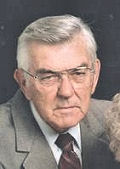 William Charles Koran, 91, beloved husband, father and grandfather, passed away January 28th, 2013, at his home in Houston, Texas.
William Charles Koran, 91, beloved husband, father and grandfather, passed away January 28th, 2013, at his home in Houston, Texas.
A resident of Houston, Texas for nearly 50 years, Mr. Koran was born on January 15th, 1922 in Youngstown, Ohio to John and Elizabeth Koran. He grew up in Youngstown and attended Wooster College for two years before enlisting in the Air Force. Mr. Koran served in the United States 8th Air Force during World War II as a navigator aboard the B-17 "Flying Fortress." He flew 30 missions over occupied Europe and was awarded numerous medals, including the Distinguished Flying Cross. He then returned to Ohio to complete his education at the Ohio State University. There he earned a Bachelor of Science degree in geology and was a member of Sigma Alpha Epsilon fraternity.
Mr. Koran was employed as a geophysicist with Texaco for most of his career. He greatly enjoyed working in Venezuela for Texaco for over 13 years before moving to Houston. He met his beloved wife, Doris, in 1956 when they both were vacationing in Puerto Rico. They celebrated their 55th wedding anniversary on April 20th, 2012.
Mr. Koran has been an active member of Memorial Drive Lutheran Church. He will be remembered for his kindness, honesty, faith in the Lord, and devotion to family. He showed by example what a loving husband, father and grandfather should be. He was a role model to all and always put others before himself. He devoted an extraordinary amount of his time and energy as caregiver to his wife. His many interests included family, sports and reading.
Mr. Koran was preceded in death by his parents John and Elizabeth Koran, and his sister Ethel Castrucci.
Mr. Koran is survived by his devoted wife of 55 years, Doris, his two sons William and David Koran, his daughter Deborah (and Dan) Robbins, his three grandchildren, Emily, Claire and Daniel William Robbins, his brother Elmer Koran, and his sister Louise Kinn.
Funeral services will be held at Memorial Drive Lutheran Church on Thursday, February 7th at 11:00am. There will be a reception at the church after the services. A private interment will be held at Memorial Oaks Cemetery in Houston. Memorial contributions may be made to the National Multiple Sclerosis Society or to Memorial Drive Lutheran Church, 12211 Memorial Drive, Houston, Texas 77024.
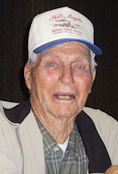 Marion L. (Dutch) Niemants, 98, died peacefully at home in El Paso on Thursday, January 31, 2013.
Marion L. (Dutch) Niemants, 98, died peacefully at home in El Paso on Thursday, January 31, 2013.
He was born September 8, 1914 in Albia, Iowa. He attended the University of New Mexico and graduated in 1941. While at the UNM he was nicknamed "The flying Dutchman" by the Albuquerque sports writers for his performance on the football field. "Dutch" was inducted into the University Of New Mexico Hall Of Honor in 2009. He played for the Detroit Lions for one season and returned to UNM as head coach for the freshman football team.
He was a WWII veteran, serving as a Captain in the Air Force and was stationed in England. He married Dixie DeGraftenreid (deceased) also a UNM graduate in 1944. He began his professional career with Standard Oil of California in Gallup, NM: Albuquerque, NM: Lubbock, TX: Abilene, TX Midland, TX and retired in El Paso, TX. He is survived by his two daughters and their husbands, Trina and Oren Albright of Midland, TX and Marilyn and Rob Bradford of El Paso, TX: two granddaughters, Heather Conner and husband, Will of Midland, TX and Stephanie Boring and husband, Jason of Lubbock, TX. He is also survived by 4 great-grandchildren - Tory and Evan Conner and Jaxon and Payton Boring. The family also wants to thank his caregiver of 5 years, Maria, who is like a member of the family. Thank you Maria for your devotion to our father!
Service will be at St. Luke's Espiscopal Church in Anthony, New Mexico on Saturday (2/9/13) at 1:00 pm. In lieu of flowers, memorials can be made to the University of New Mexico Lobo Club, MSCO426801, University of New Mexico, Albuquerque, NM 87131. He was a loyal and active Lobo fan for 75 years!
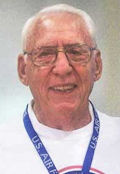 Marvin Richard Edwards was born 27 July 1923 to Howard and Louise (Folger) Edwards in Pittsburg, Kansas. Marvin passed away on January 18, 2013 in Branson, Missouri.
Marvin Richard Edwards was born 27 July 1923 to Howard and Louise (Folger) Edwards in Pittsburg, Kansas. Marvin passed away on January 18, 2013 in Branson, Missouri.
He attended and graduated from Pittsburg High School in 1940 and then attended Kansas State Teachers College (now Pittsburg State University). He was a member of Sigma Tau Fraternity.
He married M. Louise Pyle January 30, 1943 and they were married one week shy of 67 years before her passing in 2010. Marvin served in WWII with the 8th Air Force Hell's Angels Bomb group (Staff Sgt. Tail gunner B17). He completed 51 missions in the Normandy Campaign and was decorated with the Distinguished Flying Cross and Air Medal 3 clusters. In 1949, he started a National Guard Unit in Pittsburg, Kansas. During the Korean Conflict (1951-52), Marvin served as a 1st Lt. in the 24th division US Army (in Korea and Japan). He served in National Guard and received an honorable discharge at the rank of Captain on December 9, 1963. He was honored to attend the Ozarks Honor Flight in 2010 and was Branson Banks Veteran of the quarter Sept. 2012. He served as Grand Marshall of the Branson Veterans Day parade in 2012. He was also a member of the VFW, American Legion, and the Masonic Lodge in Rockford, Ill.
He was an engineer at McNally Pittsburg and later moved to Buffalo, NY with National Gypsum Co. Then on to Rockford Il. Where he was plant manager at Roper Whitney. Marvin retired to Branson, MO in 1978 but another career called and he went to work for Nameplates, Inc. (Tulsa, OK) until he was 85 years old.
He and Louise have two daughters, Bobby Sue and Jane Ann, now both living in Branson. Bobby Sue is married to the Rev. James McTaggart, and Jane Ann is married to Chad Dooley. He was blessed with 4 grand children, Jessica, Joshua (Rebecca), Sara, Samantha (Justin), three great grand children (Jordan, Elijah, Gabriel) and nieces and nephews.
Marvin, a faithful member of St. Joseph Anglican Church (the Old Stone Church on the corner of 4th and Pacific St.) Branson, will be remembered at Mass on Friday, January 25, 2013 at 2:00 pm. Mass officiated by the Rt. Rev Glen Hartley and Fr. James D. McTaggart. Memorial contributions may be made to St. Joseph's Building Fund, 511 Eagle Rock Rd. Branson, MO. 65616.
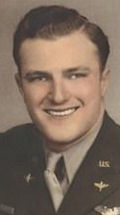 Harry S. Seidel, Sr. was born May 30, 1923 and passed away on January 20, 2012. He grew up in San Antonio, TX and graduated in 1938 from Brackenridge High School.
Harry S. Seidel, Sr. was born May 30, 1923 and passed away on January 20, 2012. He grew up in San Antonio, TX and graduated in 1938 from Brackenridge High School.
He went to the Air Force Academy in Blyth, CA. and graduated in the class of 1944B. After graduation he entered the Air Force as a 2nd LT. As a pilot he flew 23 missions over Germany. While in the Air Force he received the Purple Heart, 3 Oak Leaf Clusters, 2 Bronze Stars, Presidential Citation, Distinguished Flying Cross, and a Silver Star for heroism for saving the lives of 9 airmen when the plane he was piloting was disabled. He received an Honorable discharge in 1947.
After a distinguished military career he returned to San Antonio to begin Seidel Iron Works, which he successfully owned until his retirement in 1990. Mr. Seidel's decorative iron works can still be seen on San Antonio buildings, including Trinity University, The Medical Arts Building, downtown Joske's building, and Sunset Memorial Park, to mention a few.
He met the love of his life, Peggy, in 1947 and married shortly after on April 25, 1947. After their retirement, Harry and Peggy spent their time between San Antonio, Falcon Lake in Zapata, TX and Coutulla, TX where they enjoyed bass fishing and hunting. Harry is survived by his wife of 65 years, Peggy Seidel; son, Harry S. Seidel, Jr; sister, Gladys Harris; sister-in-law, Eve Bernardoni; nephews, Carl, Kenneth and Gordon Harris; John Michael Bernardoni, Craig H. Knopp and wife, Glenda. He is also survived by extended family members, Gloria Goodman and Linda Ross
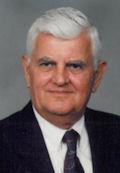 Wallace A. Clines, 87, passed away Tuesday, July 24, 2012, in Fort Worth.
Wallace A. Clines, 87, passed away Tuesday, July 24, 2012, in Fort Worth.
Graveside service: 10 a.m. Friday in Holly Hills Memorial Park in Granbury. Memorial service will be at 1 p.m. Friday at Birchman Baptist Church in Fort Worth. Memorials: Birchman Baptist Church Building Fund or Community Hospice.
Mr. Clines was born March 6, 1925, in Boerne to Lemuel and Erna Adam Clines. He married Donnetta Parker on Nov. 26, 1944, in Granbury.
Mr. Clines was a U.S. Army Air Corps veteran of World War II. He flew a B-17 and earned a Purple Heart and the Distinguished Flying Cross. He attended Texas A&M University and worked in civil service for more than 30 years.
Wallace was a charter member of Ridglea West Baptist Church in Fort Worth. He worked in the construction research department at UT-Arlington. He enjoyed traveling in the U.S., Canada and Europe. He loved and cared for his family. Survivors: Wife, Donnetta "Donny" Clines; children, Carol Scallorn, David Clines; grandchildren, Todd and Merridith Scallorn, Ann and John Bodan, Haley and Matt Howard, Lucas Clines; great-grandchildren, Sidney and Koen Scallorn, Cooper and Brooks Howard; brother, Robert P. Clines; and numerous nieces and nephews.
Keeping the Legacy Alive,

|
